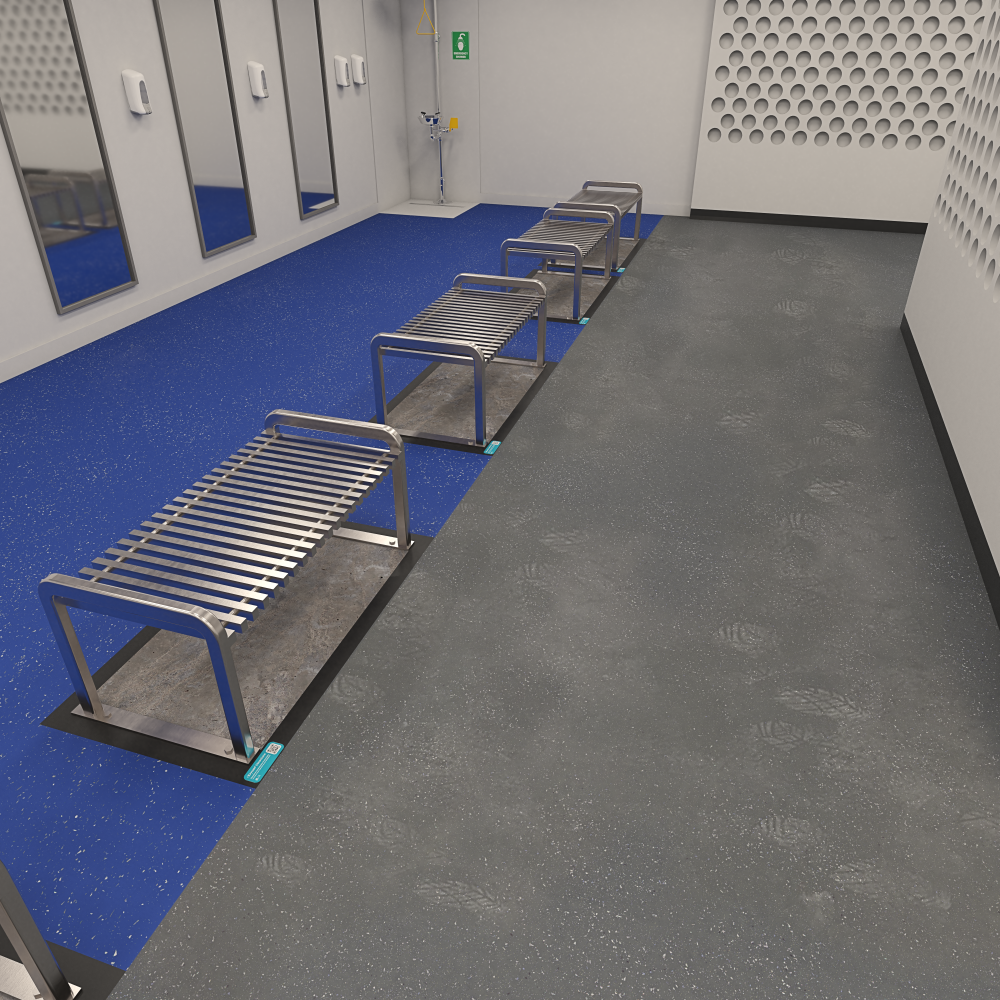Maintaining a contamination-free cleanroom is critical for industries like pharmaceuticals, medical devices, and electronics manufacturing. Despite strict protocols, cleanrooms remain vulnerable to contaminants from unexpected sources. Here are four ways to combat common cleanroom problems.
Improper Trash Handling in Cleanrooms
Contaminated waste, including soiled sticky mats or other disposables, poses a major challenge in cleanroom management. Employees often retrace their steps to locate trash bins, increasing the risk of contaminant transfer. Additionally, relying on separate personnel for waste removal can introduce new contaminants.
Solution: Designate trash removal as an exit task for employees, so they carry out waste bins as they leave. This approach minimizes the need for extra personnel to enter the cleanroom, reducing unnecessary re-garbing. Placing high-performance Dycem decontamination zones at entry points further decreases waste management issues by capturing contaminants before they spread, ensuring a safer environment.
Contamination from Personal Items
Personal items such as pens, notebooks, and tools can carry particles, bacteria, or mold, introducing contamination risks.
Solution: Implement decontamination zones at cleanroom entry points to reduce airborne particulates and surface contaminants. All personal items, no matter how small, should be scrubbed through a materials airlock. Additionally, set up a dedicated documentation station inside the cleanroom with essential materials like pens, paper, binders, and clipboards. This reduces the need to bring external items into the cleanroom, minimizing contamination risks.
Glove Contamination Control
Contaminants on gloves can spread through a cleanroom, increasing the risk of compromised cleanliness. Proper glove training is essential for all entering the cleanroom, particularly non-regular visitors.
Solution: Place decontamination mats or Dycem zones near glove-changing stations and gowning rooms to trap contaminants before they enter critical areas. Encourage double-gloving to add an extra layer of protection; if an outer glove becomes contaminated, it can be removed, leaving a clean layer underneath. This simple precaution helps maintain sustained cleanliness without the need for immediate glove replacement.
Sticky Mats: A Limited Solution for Contaminant Control
Sticky mats are widely used to capture contaminants from foot and wheeled traffic but lose effectiveness after just a few uses. Frequent peeling and disposal can release contaminants into the air, posing a risk to cleanroom environments. USP <797> guidelines state that “Sticky mats must not be placed within ISO-classified areas,” potentially limiting their use in many facilities.
Solution: Dycem polymeric flooring offers a superior alternative to sticky mats, capturing and retaining up to 99.9% of contaminants. This long-lasting solution requires minimal maintenance, providing continuous protection for high-traffic areas. Unlike disposable sticky mats, Dycem flooring is both cost-effective and scientifically proven to be more efficient in critical cleanroom environments.
Keeping a cleanroom free from contamination requires more than protocols; it demands proactive, practical solutions to everyday challenges. You can create a cleaner, safer, and more efficient environment by addressing issues like improper trash handling, contaminated personal items, glove contamination, and the limitations of sticky mats. Discover how Dycem’s high-performance polymeric flooring can elevate your contamination control efforts. With up to 99.9% contaminant capture, Dycem provides a sustainable, effective alternative to sticky mats, ensuring lasting protection in critical cleanroom environments. Learn more about Dycem in Pharma.

